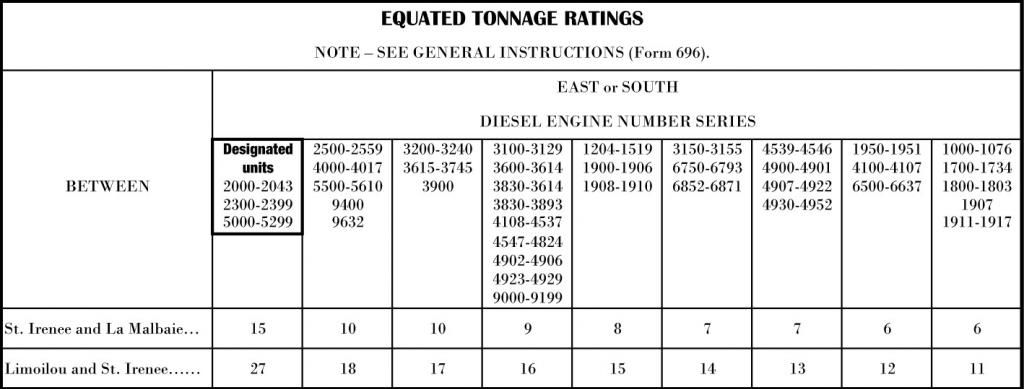I was curious to see how equated tonnage ratings would translate in HO. I started off with a 1975 CN timetable. I selected relevant parts of Murray Bay Sub and kept the values for Eastbound trains because it would be the ruling grade on this railway.
Then, I applied a similar calculation to Mike Confalone's one and other modellers to see how things would turn out.
To get "realistic" numbers, I reduced by 50% the real locomotives tonnage rating. Also, I translated the tonnage into number of cars to make them easier to use on the layout. I considered the average loaded car would weight about 100 tons, a number that seems coherent to me. I thought about using 85 tons per cars, but it seemed less satisfactory.
I made an Excel spread sheet to translate automatically CN values into HO value per cars. I made sure to reproduce the best I could the original table fonts.
It may sounds useless to many people, but I find this exercice useful. It helps you to see the relative force of each locomotive types and how to reproduce that on a layout. I like the idea to build a consist according to the job to do and not just fullfil my fantasies.
The results I get are interesting and also brings new lights to the prototype. When CN ran the line, a pair of M420 was sufficient to pull the freight train. However, when CFC took over, they used three switchers to perform the same job.
With that in mind, the table tells us 2 GMD1 are enough to pull a cement train from Villeneuve to Beauport Flats on this regular road. However, they wouldn't be strong enough to pull the same train over treacherous curves in Charlevoix and climbing grades in Malbaie river valley up to Clermont. You would be better of with a pair of road switchers like GP9, RS18 or M420.
You may argue all that could have been figured out easily without all this. That's right. Also, it's not like we will have to build many different consists. But I think it gives a sense of place, a sense of purpose, and it brings better understanding of what we are doing.

No comments:
Post a Comment